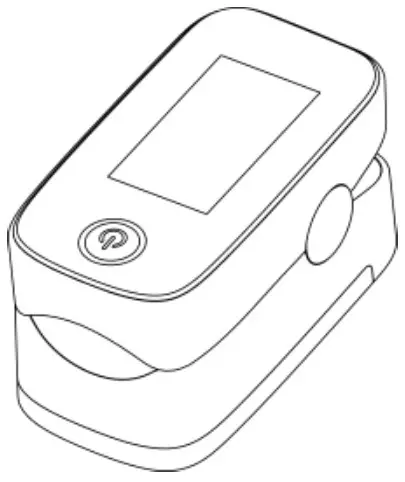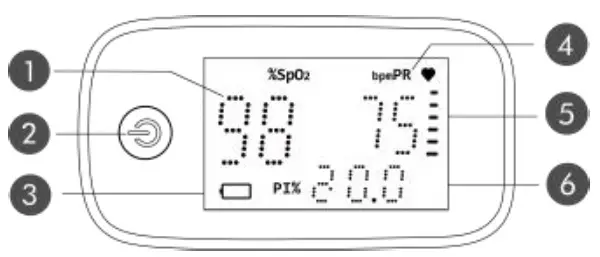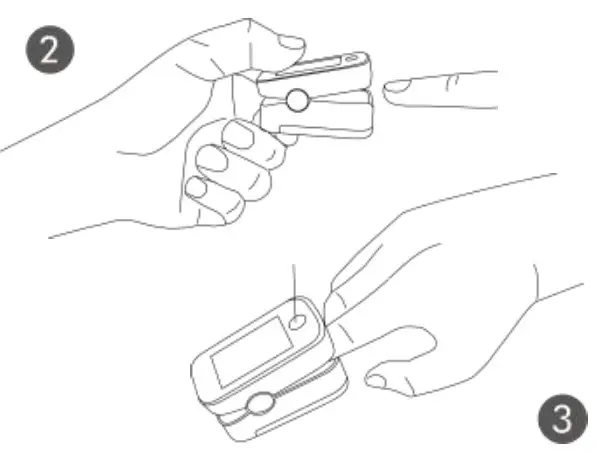

Welcome GuideModel: YM101
Introduction
Pulse Oximeters are considered a suitable alternative, though by no means equal to, blood gas testing. It can be applied for Fitness Monitoring and High Altitude Sports. If you want to use for disease surveillance such as COPD Management, Asthma Patient Care and Piece of Mind for Pulmonary Patients, please consult your doctor.
- SpO2 Value
- Operating Button
- Low Power Indication
- Pulse Rate Value
- Pulse Bar Graph
- Perfusion Index
How to Use a Pulse Oximeter Properly


- Install batteries.
- Press the bottom to open the probe.
- Insert the finger.
- Press button 2 to activate the oximeter, you will need to wait for 8 more seconds for the pulse oximeter to stabilize its readings. (Note: Support showing readings in 2 directions, short press to change the reading direction.)
Customize Settings
Non-professionals are advised not to customize the settings and use the default mode. After power on, long press button for entering Settings, short press to view the value of each item, and long press to enter the item’s submenu. Then, short press to select the parameter and long press to confirm.
- Item 1: Setup the brightness of LED display
- Item 2: Setup the SpO2 alarm limits
- Item 3: Setup the PR alarm limits
- Item 4: Turn alarm on/off
- Item 5: Check the software version
To get the best reading possible, you should NOT:
- Test with your painted fingers and toenails which can obstruct proper readings – use an earlobe instead in this case.
- Test under bright overhead lighting including sunlight, can effect readings – take your readings in rooms with normal or low-light conditions.
- Move while testing, body movement including shivering, sneezing, etc., can all affect proper readings.
Normal Range for Healthy Individuals in a Quiet State:SpO2% >9460<PR<120
For more instructions, please see the detailed user manual. If you have any problems or suggestions, please contact [email protected].
[xyz-ips snippet=”download-snippet”]

